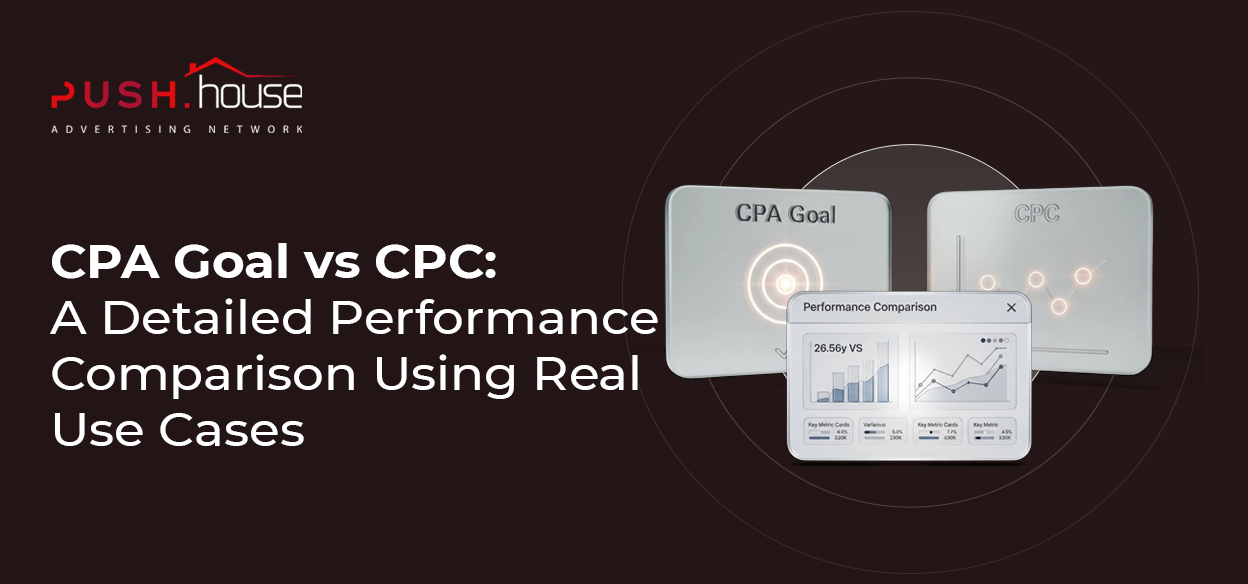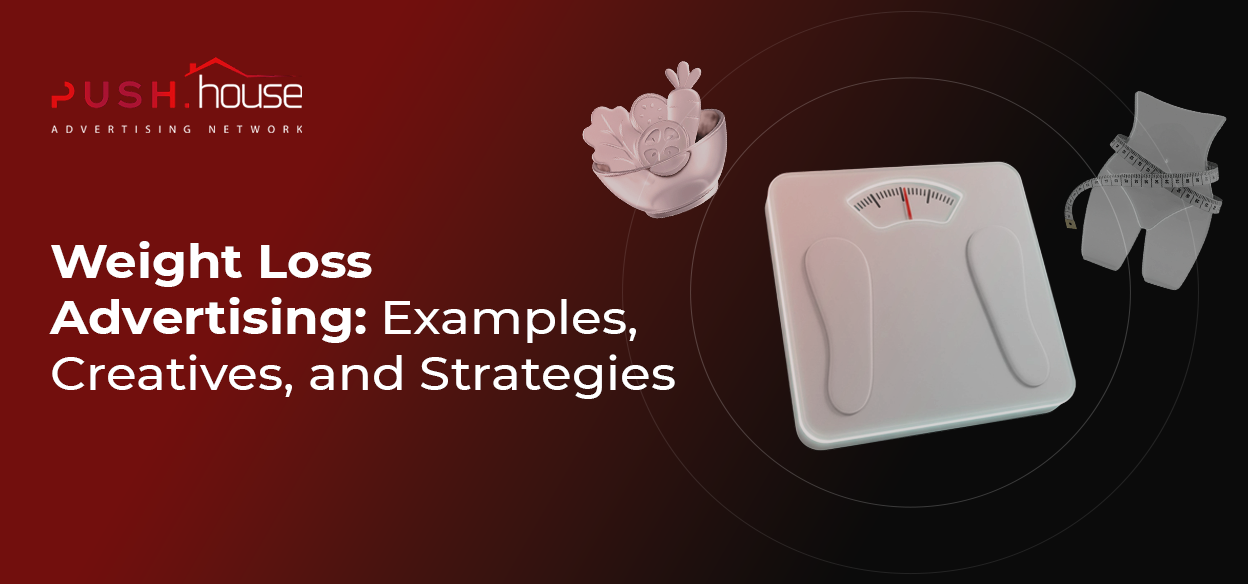
Weight Loss Advertising: Examples, Creatives, and Strategies
Hello! This is Push.House.
Push.House partners can successfully promote offers across all popular affiliate marketing verticals for 2024 using our network’s effective advertising formats.
One of the most popular niches among Push.House partners is the nutra, specifically weight loss advertising. This vertical has remained relevant for many years, consistently attracting both seasoned advertisers and newcomers to the CPA market. Let’s delve into what weight loss advertising entails, the categories of offers it includes, and the approaches that can be used to promote it.
Brief Overview of the Weight Loss Industry
The weight loss advertising industry is one of the most dynamic and rapidly evolving in the world. Each year, more people strive for an ideal figure, creating immense demand for weight loss products and services. Weight loss advertising plays a crucial role in this industry, helping companies attract their target audience’s attention and effectively promote their products.
Weight loss advertising encompasses a variety of formats, from TV commercials to online banners. Advertisers use creative approaches to stand out from the competition and convince consumers of their products’ effectiveness. One of the most popular types of weight loss ads are transformation videos showing before and after results of using the product.
The effectiveness of weight loss advertising can be attributed to the high level of user interest in health and appearance. Many companies use scientific research and customer reviews in their ad campaigns to build trust in their products. Weight loss ads based on real success stories often resonate most with audiences.
Additionally, weight loss advertising often employs psychological triggers such as fear of missing out or the desire to achieve quick results. These strategies help increase conversion rates and boost sales. Emotionally driven weight loss ads can be exceptionally effective. Thus, weight loss advertising is an integral part of affiliate marketing and plays a vital role in attracting customers and increasing lead generation.
What Are Weight Loss Products?
Explanation of Weight Loss Products and Their Market Significance
Weight loss advertising includes a wide range of products aimed at reducing weight and improving physical appereance, such as dietary supplements, meal replacements, detox drinks, and more. Weight loss ads actively promote these products, drawing the target audience’s attention to the offers.
Dietary supplements for weight loss often contain ingredients that boost metabolism, suppress appetite, or block fat. Weight loss advertising emphasizes the benefits of these products, promising quick and noticeable results.
The relevance of such offers is driven not only by high demand but also by their ability to meet the needs of various groups. Weight loss advertising helps convey product information to a broad audience, explaining their advantages and unique properties.
Why Weight Loss Advertising is a Profitable Industry
Weight loss advertising is one of the most profitable verticals in affiliate marketing. The main reason for this is the vast and continually growing market of consumers interested in weight loss and physical appereance.
Weight loss advertising is popular and generates high conversion rates. People seeking ways to lose weight are often willing to try new methods and products, making them an ideal audience for advertising campaigns. Creative and emotional weight loss ads can quickly capture attention and drive purchases.
Furthermore, weight loss advertising often features endorsements from celebrities and influencers, which enhances trust in the products. This form of advertising effectively communicates the value of a product to consumers, justifying its cost.
Thus, weight loss advertising not only promotes weight loss products but also serves as a powerful tool for achieving significant financial results.
Target Audience for Weight Loss Advertising
Target Audience Distribution by Gender and Geography
Weight loss advertising targets a broad audience, though certain demographic groups show more interest. Weight loss ads often attract more attention from women, as they are more inclined to seek out and use various methods to achieve the ideal figure. In recent years, men have also shown increased interest in healthy lifestyle.
Weight loss advertising is popular worldwide, with notable interest in countries like India and Brazil. However, strategies in these regions may vary due to cultural and economic differences.
Which Groups Are Most Receptive to Weight Loss Advertising
The primary age group for weight loss advertising ranges from 35 to 50 years. Advertising targeting this demographic often focuses on health, well-being, and preventing age-related changes. Older age groups, particularly those over 50, are also a target audience, especially when ads emphasize health benefits and an active lifestyle.
Therefore, weight loss advertising must consider gender, age, geographic location, and income level to maximize effectiveness. Understanding these factors allows for creating precise and compelling ad campaigns that are more likely to capture the audience’s attention.
Top GEOs for Launching Weight Loss Advertising
Weight loss advertising is relevant for promotion in a wide range of countries. Leading countries in terms of traffic volume and audience interest include:
- United Kingdom
- Belgium
- Germany
- India
- Brazil
- Denmark
- Italy
- Spain
- Ireland
- Canada
- Norway
- Poland
- Portugal
- Slovenia
- Czech Republic
- Andorra
- Bahamas
- Belarus
- Bulgaria
- Bolivia
- Bosnia
- Brunei
- Vanuatu
- Dominican Republic
- Indonesia
- Kazakhstan
- Qatar
- Cyprus
- Macau
- Russia
- Serbia
- Singapore
- Azerbaijan
- Albania
- Angola
- Bangladesh
- Vietnam
- Georgia
- Iraq
- Cambodia
- Cameroon
- Kyrgyzstan
- Tajikistan
- Turkmenistan
- Uzbekistan
Factors Contributing to the Success of Weight Loss Advertising in Specific Geographic Regions
The success of weight loss advertising in various regions depends on several factors. One key factor is the region’s economic development. Cultural characteristics also play a significant role. In countries where slimness and health are highly valued, weight loss advertising tends to be particularly effective.
In countries with high internet usage, advertising weight loss products on online platforms and social networks can be especially effective. This approach allows advertisers to reach a broad audience and create interactive and engaging campaigns.
Moreover, weight loss advertising may be subject to regulatory controls. Some countries have strict rules regarding the advertising of weight loss products, necessitating adaptations to local regulations.
Choosing the Right Weight Loss Offer
Recommendations for Selecting the Most Suitable Weight Loss Offers for Advertising
When selecting products for affiliate marketing in the weight loss niche, it is crucial to consider several key factors for success. One of the first steps is market analysis and trend identification. Weight loss advertising should focus on current, in-demand products that genuinely attract the target audience. Additionally, ads should highlight real results and positive user experiences to build trust among potential buyers.
Another crucial aspect is the uniqueness and novelty of the offer. Weight loss advertising should highlight these unique properties and advantages over competitors. It’s also essential to consider the target audience and their preferences. Weight loss advertising can target different age groups, genders, and geographic locations.
Payout size is another critical factor. When choosing an offer, it’s important to evaluate potential profit. Weight loss advertising with high commissions per conversion is more attractive.
Launch you advertising campaigns in Push.House
How to Promote Weight Loss Offers?
Strategies for Attracting Traffic to Weight Loss Advertising
To effectively promote weight loss offers and create high-quality advertising, it is necessary to develop and implement efficient audience attraction strategies. One of the key strategies is creating creative and attention-grabbing ads. Weight loss ads should be visually appealing and include strong calls to action. Using bright images, compelling headlines, and real customer reviews helps increase interest and trust in the product.
Weight loss advertising should also consider seasonal factors. It can be particularly effective at the beginning of the year when many people set weight loss goals, and before the summer season. Leveraging these time periods to intensify advertising campaigns can significantly boost conversions.
Using various marketing channels and methods, combined with creative and targeted strategies, maximizes reach and conversions while ensuring high-quality creatives for weight loss offers. A multi-channel approach in weight loss advertising yields high results and contributes to successful marketing. Currently, the most in-demand approaches among Push.House partners are:
- Teaser Approach
Teaser advertising for weight loss subtly hints at the potential benefits of the offer. Users click on weight loss ads not necessarily to purchase the offer, but because the creative resonates with them.
When creating teaser advertising for weight loss, it’s essential to consider the following parameters:
- Showcasing Food Products: This includes any commonly consumed products (potatoes, lemons, baking soda, etc.). The main requirement is that the product should be available in every kitchen and can be used immediately. In some cases, exotic fruits or vegetables (like mango, avocado, or salmon) may be mentioned.
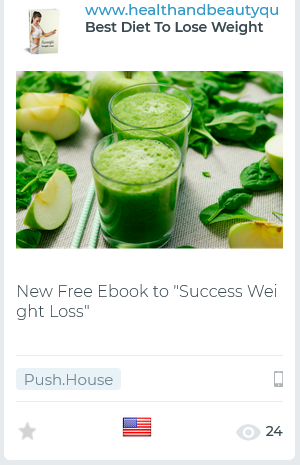

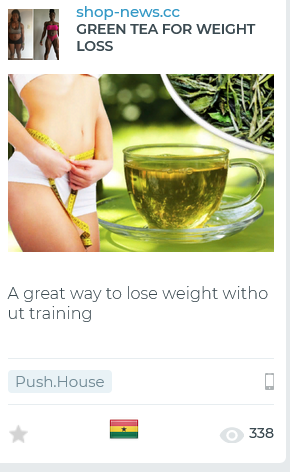

- Sport: Weight loss advertising that includes mentions of any type of sport (gymnastics, gym, etc.). Weight loss ads that mention any type of sport (like gymnastics or gym workouts). Creatives in this category combine various exercises with the offer product.
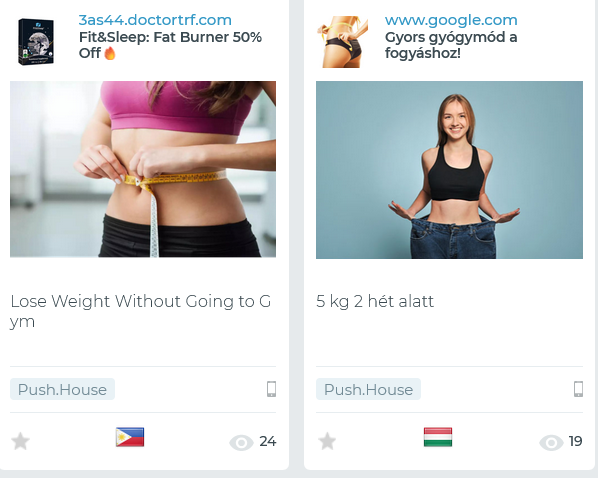

- Alternative Weight Loss Advertising: Informal methods of weight loss advertising always attract users with their uniqueness and unconventional approach.
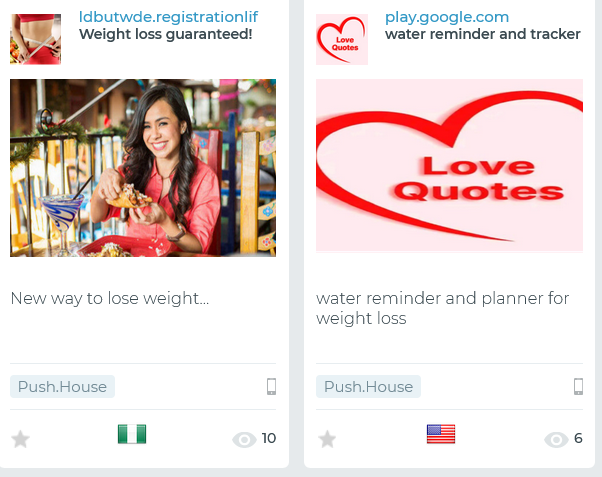

- Healthy Eating: ds focused on healthy eating have consistently led weight loss creatives, offering users quick ways to shed extra pounds.
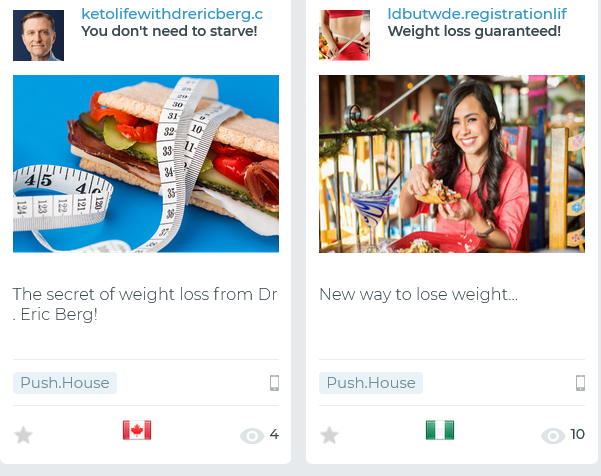

- Traditional Medicine: This includes all traditional weight loss methods. This approach is particularly relevant for Tier-2 and Tier-3 regions, where medical care in remote areas may not meet consumer expectations.
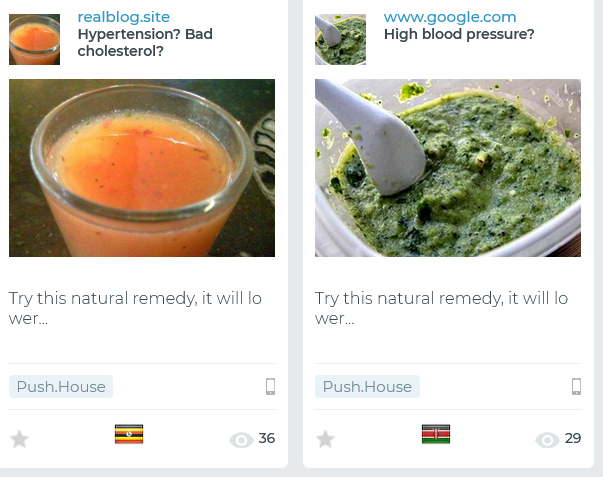

- Shocking Content: This can include any unpleasant or even disgusting images that hint at the problems excess weight can lead to.


1. Medical Approach: The medical approach to promoting weight loss offers is based on using scientific data and medical research to build trust in the product, as well as featuring images of doctors and scientists. Weight loss ads using this approach often include photos of clinical studies, doctors, and medical attributes. This helps create the impression that the product is safe and effective. It’s important for weight loss ads to emphasize evidence and expert opinions, which is especially attractive to consumers seeking reliable solutions.


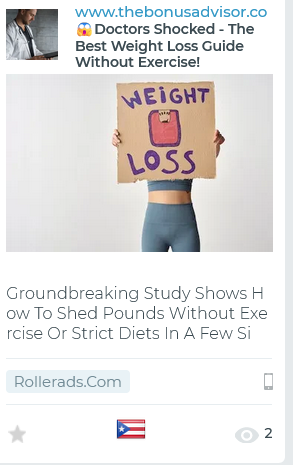

2. Product Approach: The product approach focuses on the products themselves, their unique characteristics, and benefits. This approach often highlights ingredients, innovative technologies, and exclusive formulas that make the product effective. These campaigns focus on visual elements, natural composition, product name, packaging, and specific benefits. Examples include detox drinks, fat burners, or meal replacements that are easy to use and integrate seamlessly into daily routines.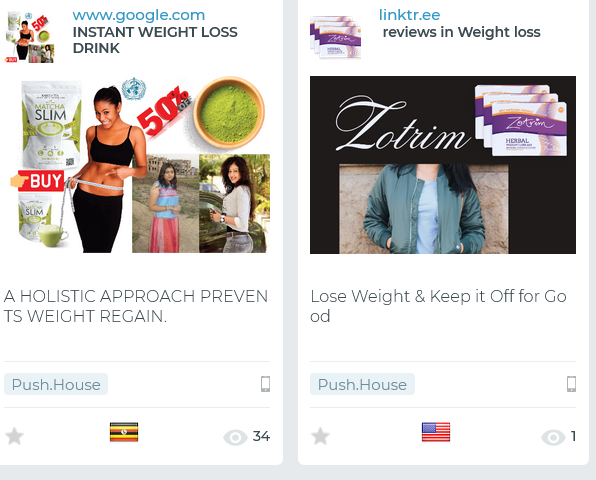

3. Before/After Approach: The before/after approach is one of the most powerful tools in weight loss advertising. This method shows results before and after using the product. Ads with before and after photos allow potential clients to visually assess the product’s effectiveness. It’s important that the images show real results to avoid distrust or accusations of fraud, thereby increasing conversion rates. This approach works especially well because it demonstrates tangible changes and inspires consumers to purchase.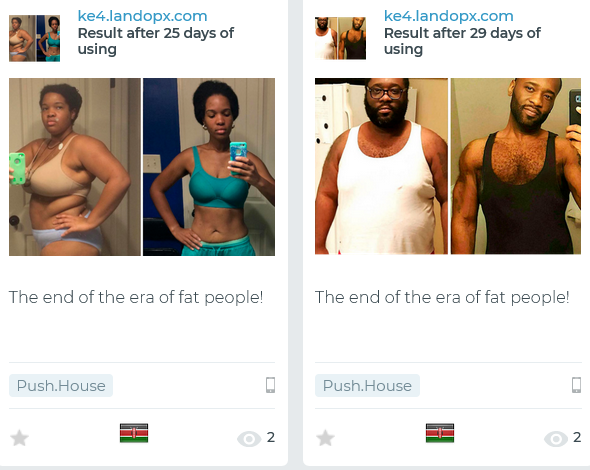

4. Approach showing Consequences
The approach showing consequences emphasizes the negative results that can arise from not taking action to lose weight. These ads can focus on medical issues related to being overweight, such as heart disease, diabetes, or joint problems. This approach uses fear and anxiety as motivators for purchasing the product. Weight loss advertising with this emphasis should be sensitive and ethical to avoid negative reactions from the audience.


Creating Successful Weight Loss Creatives
Tips and Recommendations for Creating Effective Weight Loss Ads
Effective weight loss advertising requires a careful approach to creating creative ads that can attract attention and motivate the target audience to act. Here are some key tips and recommendations to help make your weight loss ads successful and effective:
- Use Engaging Visual Elements
Weight loss ads should be visually appealing. Include high-quality images that show before and after results of using the product.
- Highlight Unique Benefits
Clearly and concisely communicate what makes your product unique in weight loss ads. This could be special ingredients, innovative technologies, or exclusive formulas.
- Include Reviews and Success Stories
Social proof plays an important role in weight loss advertising. Include feedback from real customers and success stories that highlight the effectiveness of your product.
- Create a Strong Call to Action (CTA)
Weight loss ads should have a clear and strong call to action. Use phrases that prompt immediate action, such as “Try Now,” “Order Today,” or “Get a Discount.”
- Adapt Content to the Target Audience
Weight loss ads should be tailored to the interests, age, gender, and geographic location of potential clients.
- Test and Optimize
Creating successful weight loss ads requires constant testing and optimization. Conduct A/B tests for various ad elements, such as headlines, images, and CTAs.
Detailed information on split testing can be found here.
- Use Emotional Triggers
Weight loss ads that evoke an emotional response are particularly effective. Emotional triggers help create a deeper connection with the audience and motivate them to purchase.
Weight loss advertising based on quality content and a strategic approach will ensure the successful promotion of your offers and revenue growth.
Creating Catchy Headlines
Tips for Creating Catchy Headlines for Weight Loss Ads
Here are some tips to help create effective headlines for weight loss advertising:
- Be Specific and Clear: Weight loss ads should clearly and specifically convey what your offer. For example, “Lose Up to 10 kg in a Month!”
- Use Strong Words: Words like “easy,” “quick,” “effective” can significantly increase the appeal of a headline. Weight loss ads should motivate and instill confidence in achieving results.
- Include Numbers and Statistics: A headline like “95% of Clients Achieved Results in 4 Weeks” can make weight loss ads more credible and appealing.
- Ask Questions: Questions in headlines stimulate interest and engage the audience. For example, “Tired of Diets and Workouts?”
- Use Calls to Action: Ensure the headline includes a clear call to action. For example, “Start Losing Weight Today.”
The Importance of Catchy and Effective Text in Weight Loss Advertising
Catchy and effective text in weight loss ads plays a crucial role in the success of an advertising campaign. Here are a few reasons why catchy text is important:
- Increases Click-Through Rate:
Compelling headlines and text encourage users to click on your ads.
- Builds Trust and Interest:
Weight loss ads that appear credible and are backed by evidence gain more trust.
- Stimulates Conversions:
The goal of weight loss ads is conversion. Strong headlines and text guide users to take the desired action.
- Evokes Emotional Response:
Weight loss ads that touch on personal experiences and motivation can more deeply impact the audience and encourage them to take action.
Weight loss ads based on strong headlines and text significantly increase the chances of success and achieving high conversions.
Examples of Landing and Pre-Landing Pages
· Landing Page
A landing page is the primary tool for gaining conversions. Effective weight loss ads should direct users to a high-quality landing page that immediately captures attention and prompts action.


· Pre-Landing → Landing
Effective weight loss ads often use pre-landing pages to increase conversion rates. Pre-landing pages should be closely linked to the landing page and smoothly lead the user to the final offer.


· Pre-Landing with Order Form
A pre-landing with an order form allows you to immediately collect contact details of potential clients. Weight loss ads using this approach are considered among the most effective.
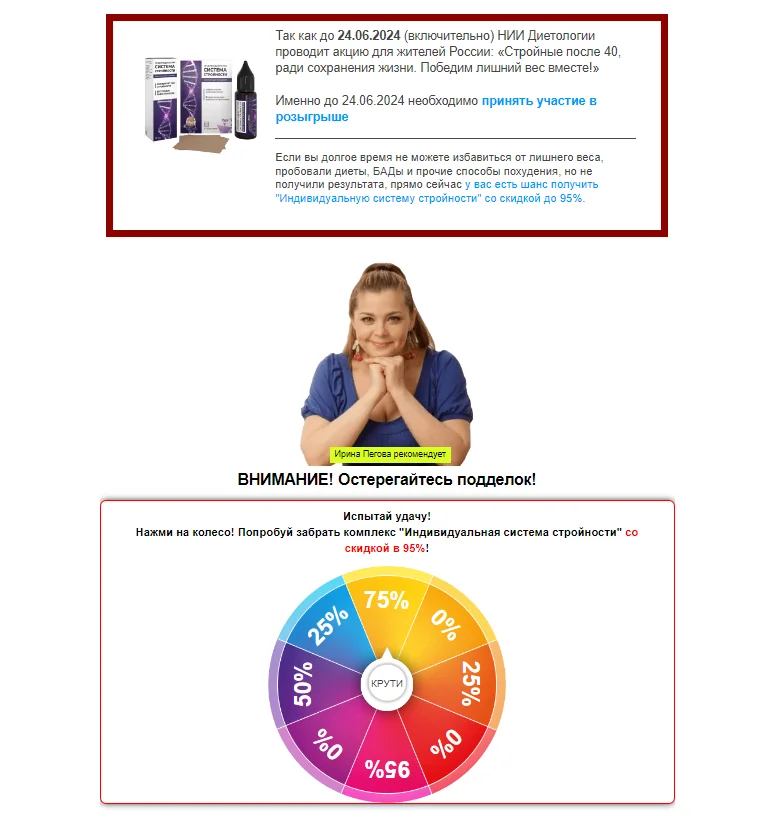

Conclusion
Now that you are familiar with the key aspects of creating effective weight loss ads, it’s time to move from theory to practice. Launch your advertising campaign on Push.House and apply all the knowledge gained from this material.
Don’t miss the chance to increase your conversions and boost profits. Start your weight loss ad campaign on Push.House today and achieve maximum profit with us!



